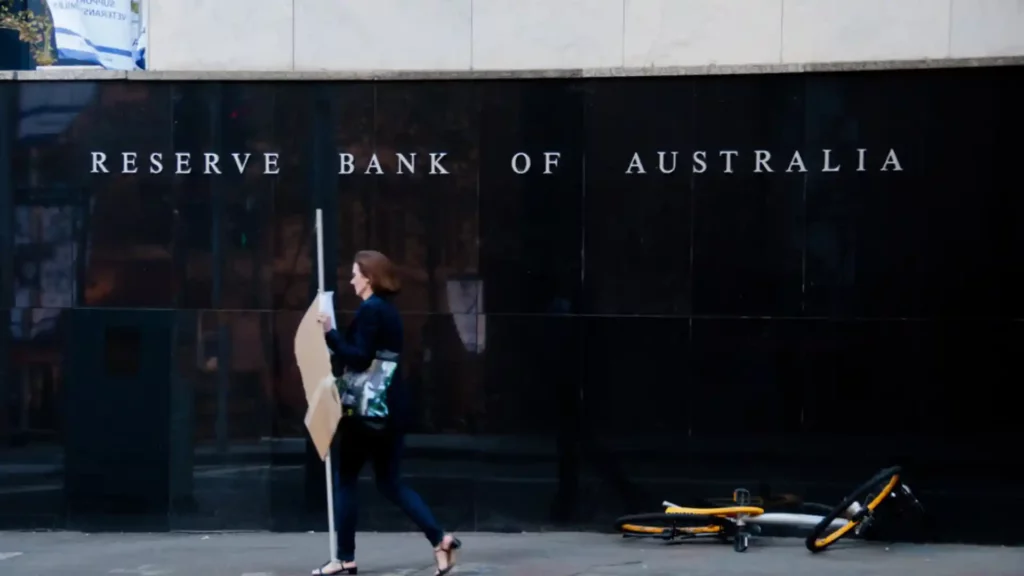The RBA felt the need to push back against talk of a near-term reduction in rates and might possibly keep rates steady for “an extended period”.
The Australian Central Bank (RBA) has signalled that it will keep interest rates at their current 12-year high for an “extended period” to ensure that inflation reaches the target band in the upcoming year since policy easing is still some ways off.
The minutes of the Reserve Bank of Australia‘s recent two-day meeting, released on Tuesday (Aug 20), showed that the board discussed further tightening but chose to maintain the key rate at 4.35% as a “stronger one,” given the prevailing uncertainty about staff forecasts, market volatility and expectations for rate cuts.
The board concluded that market pricing for rate reductions in the upcoming year, including a first easing by December, was incompatible with a return of inflation to the mid-point of the target band of 2-3% in 2026. As a result, the RBA felt the need to push back against talk of a near-term reduction in rates and might possibly keep rates steady for “an extended period”.
The board members of the Aug 5-6 meeting decided to “leave the cash target steady for a longer period than currently implied by the market pricing, which will reduce the inflation to the target range in a reasonable time frame.” “Monetary policy must remain reasonably restrictive until the members are confident that inflation will steadily return to the target range.”
As per the statement, the board plans to give the data “somewhat greater than usual weight” due to the level of uncertainty about the staff’s forecasts for spare capacity, unemployment, and consumer demand.
The RBA (Reserve Bank of Australia) further emphasised that future policy changes cannot be “ruled in and out,” and they will take all necessary steps to ensure that inflation reaches the target of 2–3%.
Additionally, the minutes highlighted the board’s policy conundrum of when global inflation was slowing down, but Australia’s inflation was rising and sticky.
Recently, New Zealand, Canada, Sweden, and the UK decided to lower interest rates, while the US Federal Reserve expects to lower rates within the next month.
The primary difference is that the RBA chooses to raise rates more slowly than others, and its benchmark is roughly one percentage point lower than others. Policymakers have often cited their desire to combat inflation and maintain the recent labour market gains to justify their policy decisions.
“Maintaining a stable cash rate is the best way to balance the risk of the outlook for both inflation and the labour market.” The minutes indicated that the board members reaffirmed the need to be “vigilant to upside risks to inflation” in light of the current uncertainty.
Financial market pricing indicates that the Reserve Bank of Australia (RBA) will likely reduce expenses in December, as planned. According to a Bloomberg News survey, most economists anticipate that the RBA will maintain the cash rate at its current level this year.
The minutes revealed that the board had devoted a fair deal of time considering the request for a hike. The RBA also discussed these points:
- Underlying inflation was continuing to be persistent.
- The risk of inflation not returning to the target range within a reasonable timeframe has increased, which means there has been slow disinflation over the preceding years and, the staff’s judgment of the aggregate supply and demand was larger and needs to be reassessed.
- The board’s approach is to “bring back the inflation to the target within the reasonable timeframe and the tolerance of the timeframe being pushed back further is limited.”
- The persistence of cost pressure was a common theme in the liaison discussions.
- An increase in credit and property prices as well as a decrease in bond yields, helped the financial circumstances appear to be somewhat improving.
